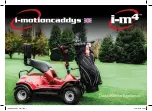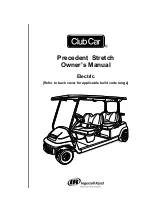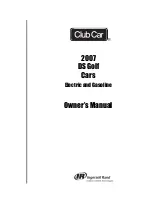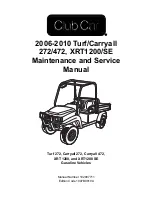
B
MAINTENANCE
Read all of SAFETY and this section before attempting any procedure. Pay particular attention to Notices, Cautions, Warnings and Dangers.
51
Owner’s Guide
Using a water hose without first neutralizing any acid, will move acid from the top of the battery to another area of the
vehicle or storage facility where it will attack the metal structure or the concrete/asphalt floor. Additionally, a residue will
be left on the battery which is conductive and will contribute to the discharge of the battery.
To reduce the possibility of a battery explosion that could result in severe injury or death, do not
use metallic spray wand to clean battery and keep all smoking materials, open flame or sparks
away from the battery.
The correct cleaning technique is to spray the top and sides of the battery with a solution
of sodium bicarbonate (baking soda) and water. This solution is best applied with a gar-
den type sprayer equipped with a
non metallic spray wand or a plastic spray bottle
.
The solution should consist of the amounts of sodium bicarbonate (baking soda) and
clear water shown below. In addition to the battery, special attention should be paid to
metal components adjacent to the battery which should also be sprayed with the sodium
bicarbonate (baking soda) solution.
Allow solution to sit for at least three minutes; use a soft bristle brush or cloth to wipe the
top of battery to remove any residue that could contribute to the self discharge of the bat-
tery. Rinse entire area with low pressure clear water. Do not use a pressure washer.
AIR INTAKE AND COOLING FINS
To prevent possible burns, engine parts should be kept clean to reduce risk of overheating and
ignition of accumulated debris. After every off road use, allow to cool and then check for a build up
of dirt and debris in the air intake and cooling fins. Dirt and debris may clog the engine’s air cooing
system. Clean areas shown to prevent engine damage. Keep linkages, springs and controls clean.
Keep area around muffler free of any combustible material.
At least once a year, (or more often under adverse conditions)
the cooling system should be cleaned. Cleaning will assure an
adequate supply of air to the cooling fins. Compressed air may
be used for routine cooling system maintenance.
1 quart
(1 liter)
Clear Water
2 Teaspoons
(10 ml)
Sodium
Bicarbonate
(Baking Soda)
Plastic
Spray
Bottle
















































